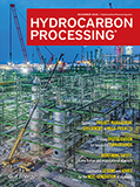August 2024
Digital Features
Digital Feature: Minimizing the cost of corrosion: Budgeting for industrial asset preservation
Advanced budgeting for corrosion protection is critical to industrial facility management. Since the urgency of the matter is often not realized until a failure or accident occurs, the article provides several tips to help maintenance, purchasing or corporate teams start budgeting for preservation before an emergency happens.
This is a preview of our premium content. Thank you for your interest—please log in or subscribe to read the full article.






Comments